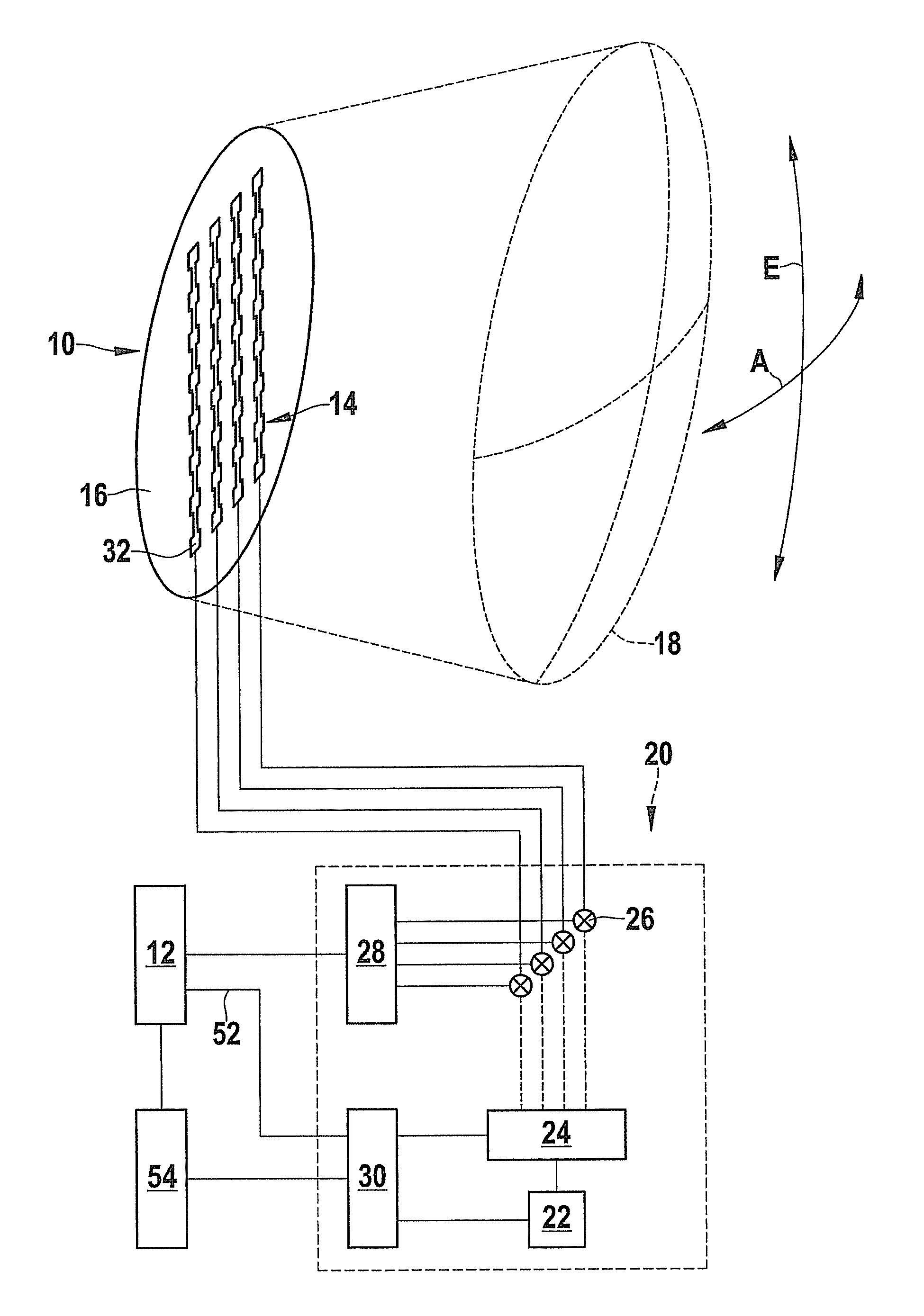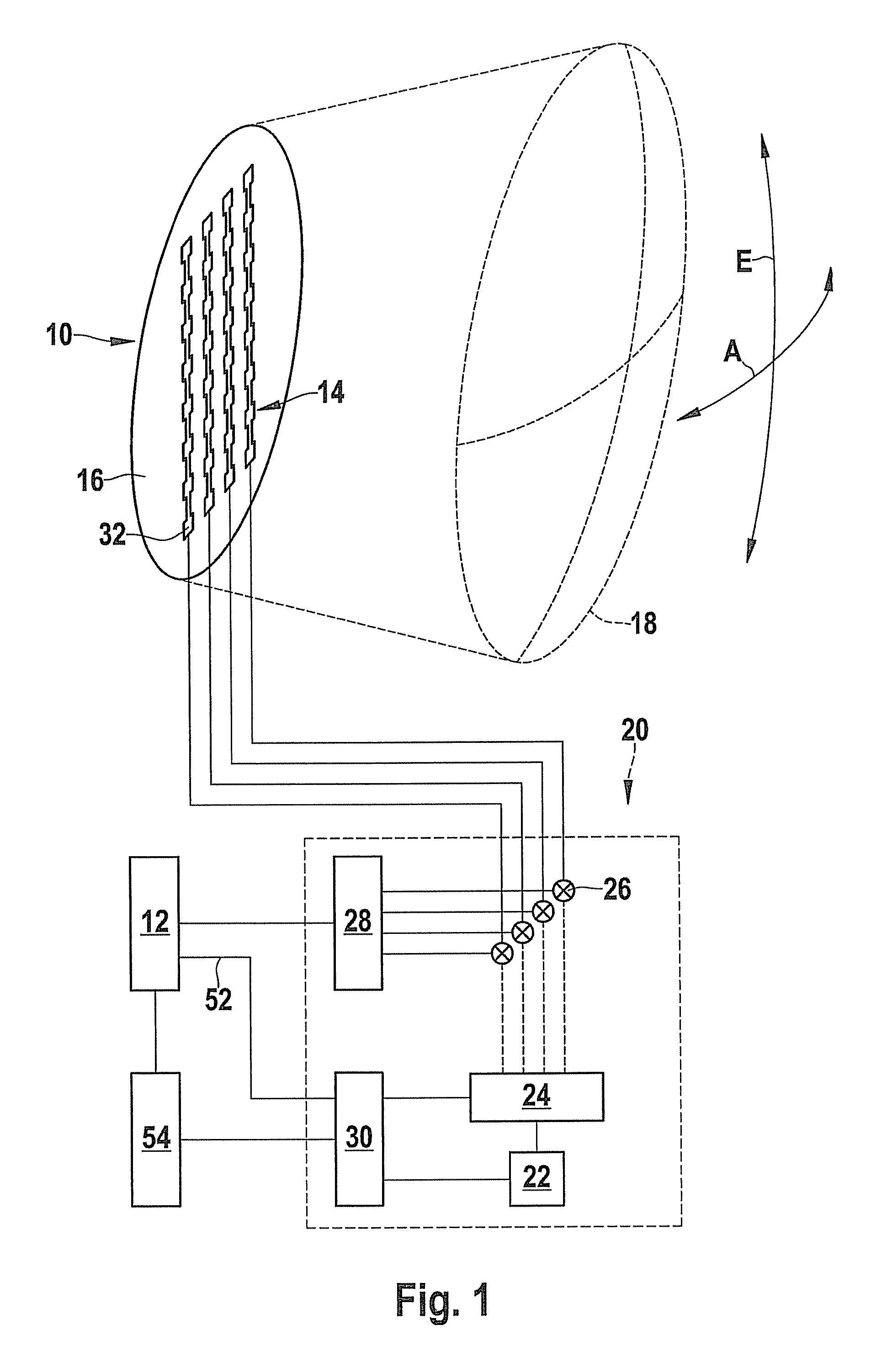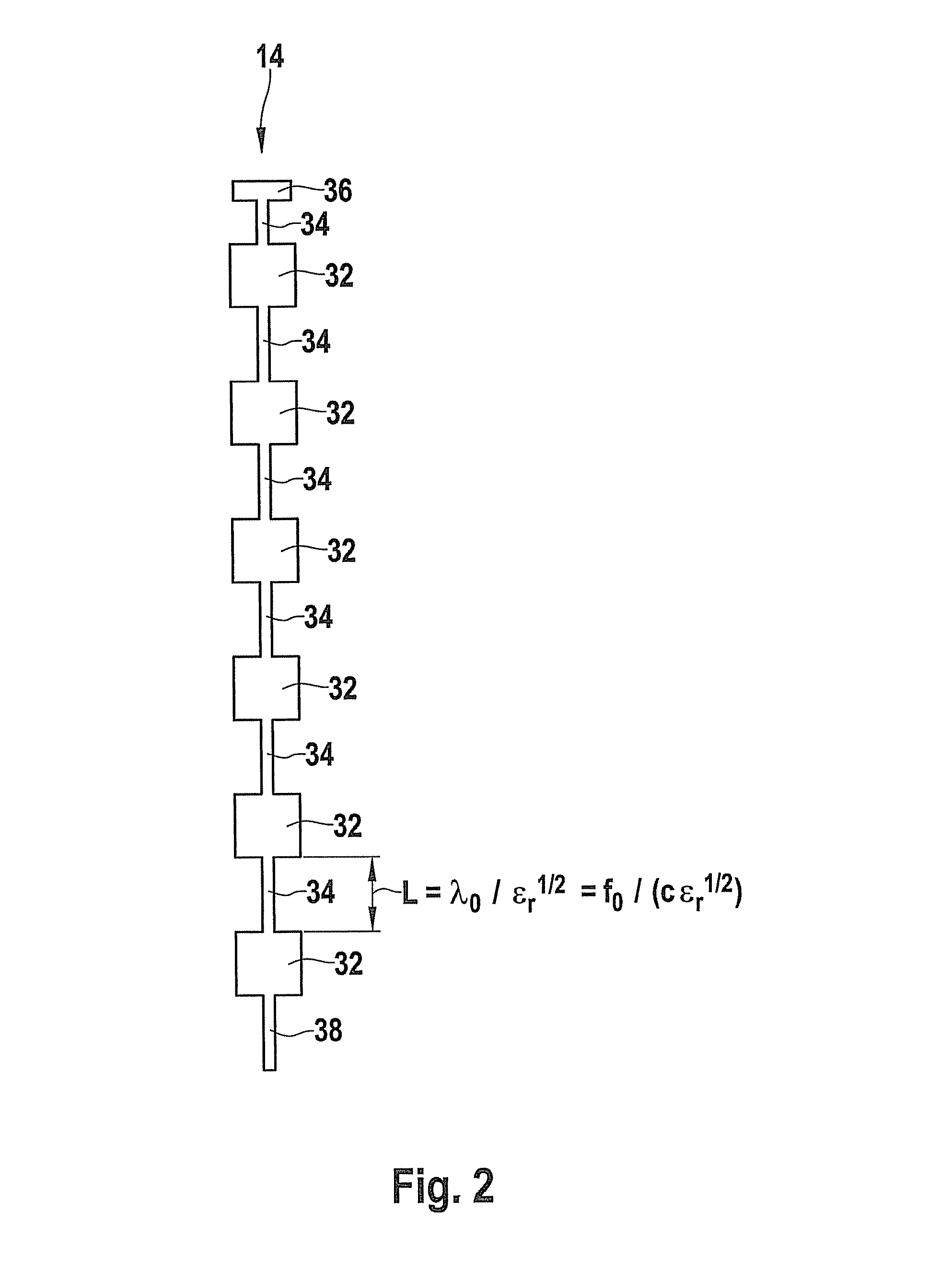FMCW radar sensor for motor vehicles
a technology for fmcw radar and motor vehicles, applied in the direction of linear waveguide fed arrays, instruments, and using reradiation, can solve problems such as problematic automatic blindness recognition, and achieve the effect of simple and reliable blindness recognition, improved object positioning and characterization
- Summary
- Abstract
- Description
- Claims
- Application Information
AI Technical Summary
Benefits of technology
Problems solved by technology
Method used
Image
Examples
Embodiment Construction
[0022]FIG. 1 shows, in a simplified block diagram, the main components of a driver assistance system for motor vehicles, for example, an adaptive cruise control (ACC), having a radar sensor 10 installed in the vehicle and an evaluation device 12 in the form of an electronic data processing system. Radar sensor 10 is used to locate preceding vehicles, and evaluation device 12 interferes, on the basis of the locating data of the radar sensor, in the drive and braking systems of the vehicle, in order to regulate the velocity of the vehicle in such a way that a vehicle, which is directly preceding in the same lane, is followed at an appropriate safety distance.
[0023]Radar sensor 10 has a circuit board 16, which is equipped with antenna elements 14 (four in the example shown), and which is positioned at a distance to a microwave lens 18. A drive circuit 20, which is shown as a block in FIG. 1, is positioned at or on circuit board 16, having a voltage-controlled oscillator 22, a phase-loc...
PUM
 Login to View More
Login to View More Abstract
Description
Claims
Application Information
 Login to View More
Login to View More - R&D
- Intellectual Property
- Life Sciences
- Materials
- Tech Scout
- Unparalleled Data Quality
- Higher Quality Content
- 60% Fewer Hallucinations
Browse by: Latest US Patents, China's latest patents, Technical Efficacy Thesaurus, Application Domain, Technology Topic, Popular Technical Reports.
© 2025 PatSnap. All rights reserved.Legal|Privacy policy|Modern Slavery Act Transparency Statement|Sitemap|About US| Contact US: help@patsnap.com



